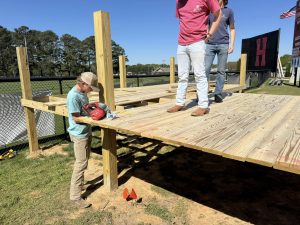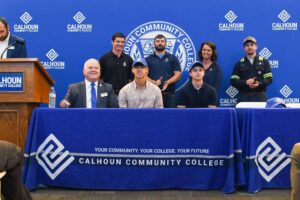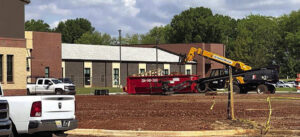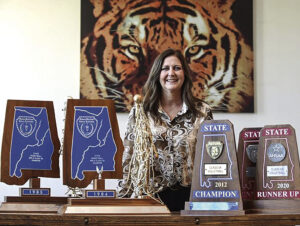Green Space
Flint Creek cropland becomes mitigation bank for wetlands
What was once fertile cropland on the west bank of Flint Creek is now a “sold out” wetland mitigation bank and a protected wildlife refuge.
An important secondary use is an environmental education tool for tour groups.
The 850-acre green space was the object of a guided tour conducted for members of the Morgan County Extension Advisory Board last week.
The wetland tour followed an advisory board meeting at which a light lunch was served and Extension leaders were introduced and given a few minutes to speak about the particular services they offer residents of Morgan and surrounding counties.
Ronald Britnell, CEC Morgan County, emceed the meeting. He thanked committee members for their interest and support of Extension activities and invited them to submit workshop topic recommendations for future strategic program initiatives.
Initiatives were listed under six titles as follows: (1) Sustainable Agricultural and Forestry Systems, (2) Safe and Secure Food Supply, (3) Health and Wellness Across the Lifespan, (4) Animal Stewardship and Welfare, (5) Renewable Energy and Energy Conservation and (6) Natural Resource Conservation and Environmental Stewardship.
Riding on an open trailer especially designed for riding tours, a group of 12 committee members participated in the tour. Brad Bole, director of the Flint Creek Watershed and Britnell served as guides.
Bole pointed out that the mitigation bank changed from private to pubic hands once the acreage was purchased in one-acre increments to replace wetlands that were destroyed during construction of public and private building projects over the past 11 years. The land is now owned solely by the Morgan County Commission, which has responsibility for its maintenance and upkeep.
The tract is presently covered with native plants and trees, ranging from a foot to 20-ft tall, with the exception of five man-made ponds, three miles of unpaved roadway and several miles of walking trails.
A recent addition is a 20-ft. viewing stand near the middle of the property, It provides the viewer with a view of the entire wetland.
Britnell said one can see all kinds of wild animals—rabbits, possums, deer, wild hogs, etc moving about in the distance from the stand’s vantage point.
“Hogs are a nuisance,” he said. “because they root up important plants and other undergrowth.
“We have trapped and disposed of about 35 hogs that weighed from 50 to 200 pounds during the past couple of years,” he said.
Bole said the wetland was the first privately-owned tract of land in the state that was purchased for the propose of converting it into a wetland mitigation bank about 11 years ago.
“It is now being used on a regular basis as a teaching tool for educational projects, Bole said.








